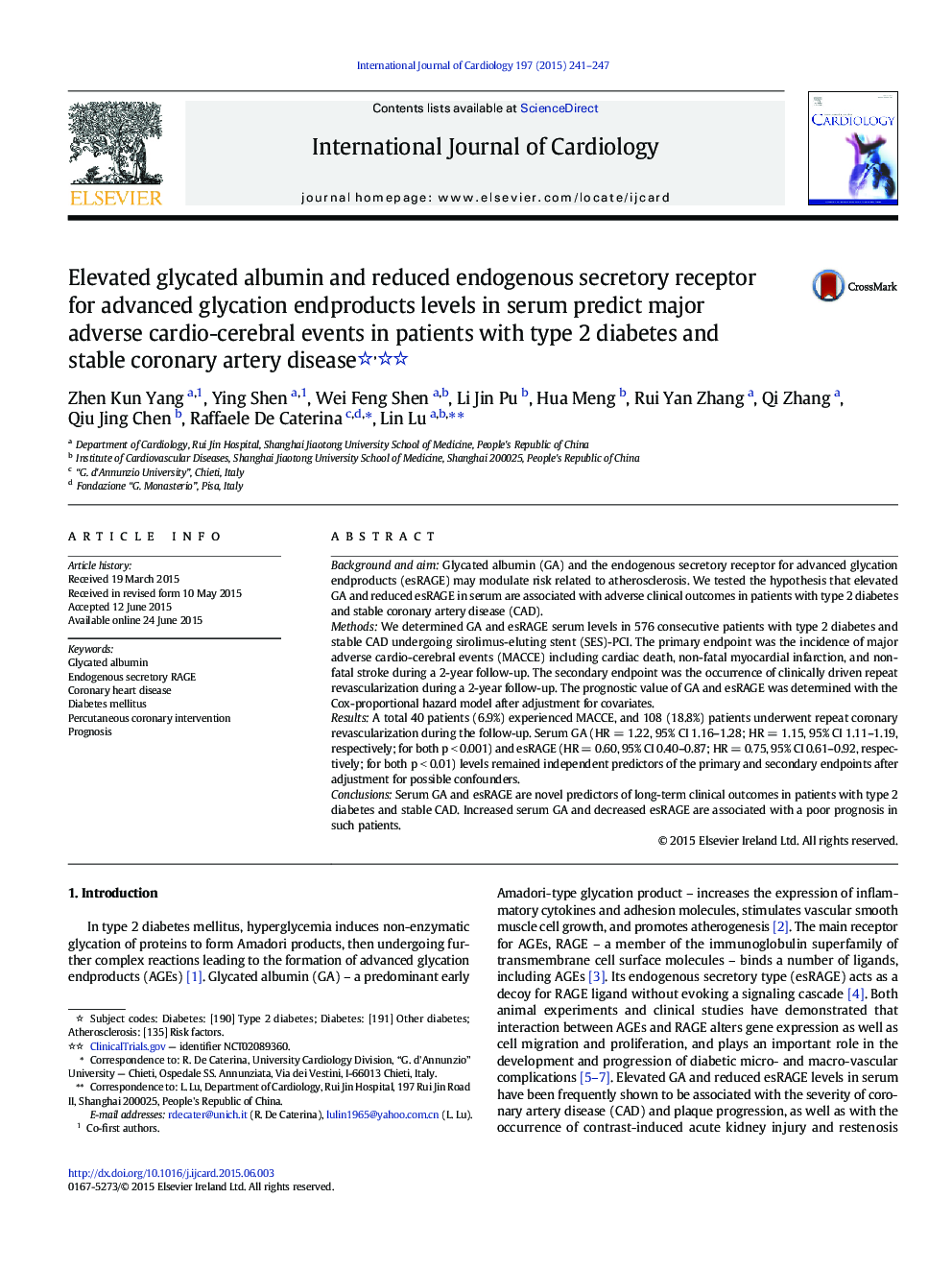| کد مقاله | کد نشریه | سال انتشار | مقاله انگلیسی | نسخه تمام متن |
|---|---|---|---|---|
| 2928921 | 1576155 | 2015 | 7 صفحه PDF | دانلود رایگان |
• We hypothesized that GA and esRAGE predict cardiovascular events.
• We determined GA and esRAGE serum levels in patients with diabetes and stable CAD.
• GA and esRAGE indeed predict outcomes in addition to traditional risk factors.
• Increased GA and decreased esRAGE predict a poor prognosis in such patients.
Background and aimGlycated albumin (GA) and the endogenous secretory receptor for advanced glycation endproducts (esRAGE) may modulate risk related to atherosclerosis. We tested the hypothesis that elevated GA and reduced esRAGE in serum are associated with adverse clinical outcomes in patients with type 2 diabetes and stable coronary artery disease (CAD).MethodsWe determined GA and esRAGE serum levels in 576 consecutive patients with type 2 diabetes and stable CAD undergoing sirolimus-eluting stent (SES)-PCI. The primary endpoint was the incidence of major adverse cardio-cerebral events (MACCE) including cardiac death, non-fatal myocardial infarction, and non-fatal stroke during a 2-year follow-up. The secondary endpoint was the occurrence of clinically driven repeat revascularization during a 2-year follow-up. The prognostic value of GA and esRAGE was determined with the Cox-proportional hazard model after adjustment for covariates.ResultsA total 40 patients (6.9%) experienced MACCE, and 108 (18.8%) patients underwent repeat coronary revascularization during the follow-up. Serum GA (HR = 1.22, 95% CI 1.16–1.28; HR = 1.15, 95% CI 1.11–1.19, respectively; for both p < 0.001) and esRAGE (HR = 0.60, 95% CI 0.40–0.87; HR = 0.75, 95% CI 0.61–0.92, respectively; for both p < 0.01) levels remained independent predictors of the primary and secondary endpoints after adjustment for possible confounders.ConclusionsSerum GA and esRAGE are novel predictors of long-term clinical outcomes in patients with type 2 diabetes and stable CAD. Increased serum GA and decreased esRAGE are associated with a poor prognosis in such patients.
Journal: International Journal of Cardiology - Volume 197, 15 October 2015, Pages 241–247
